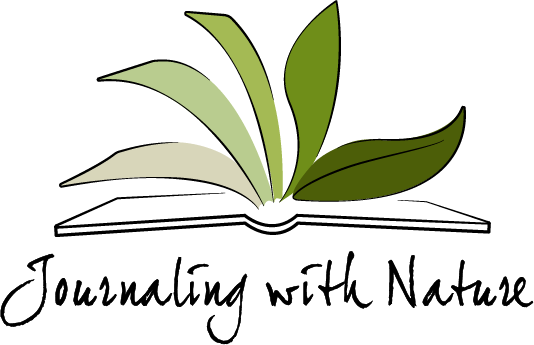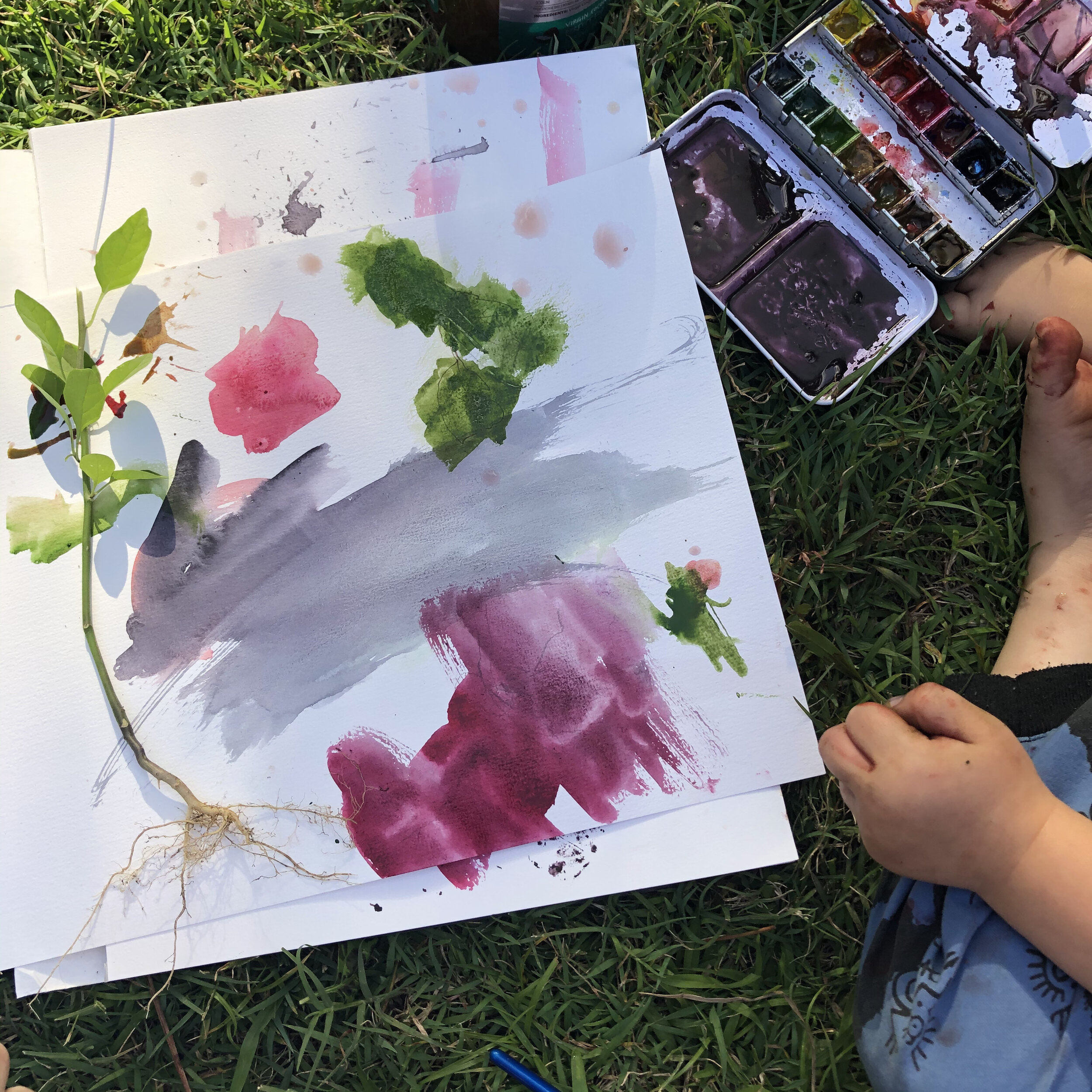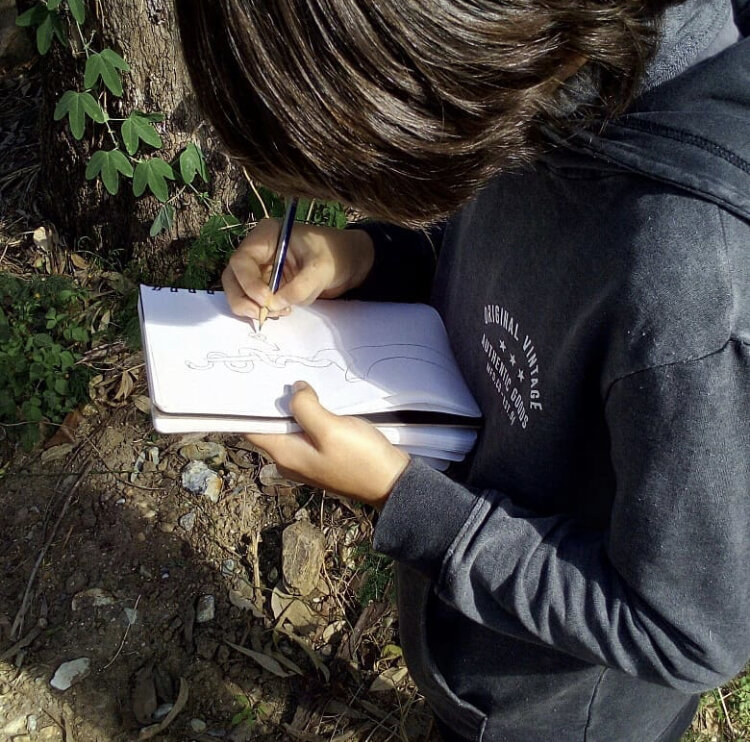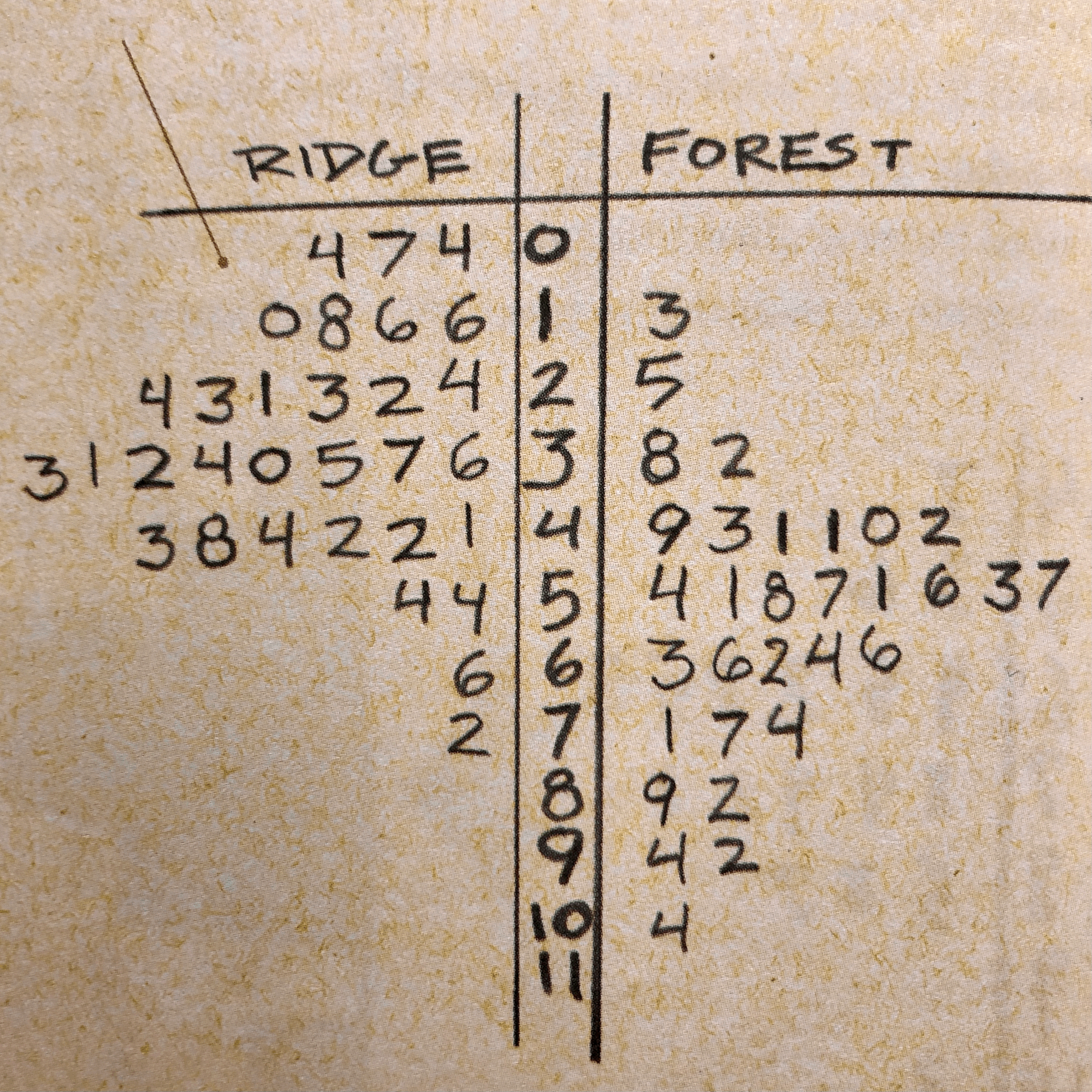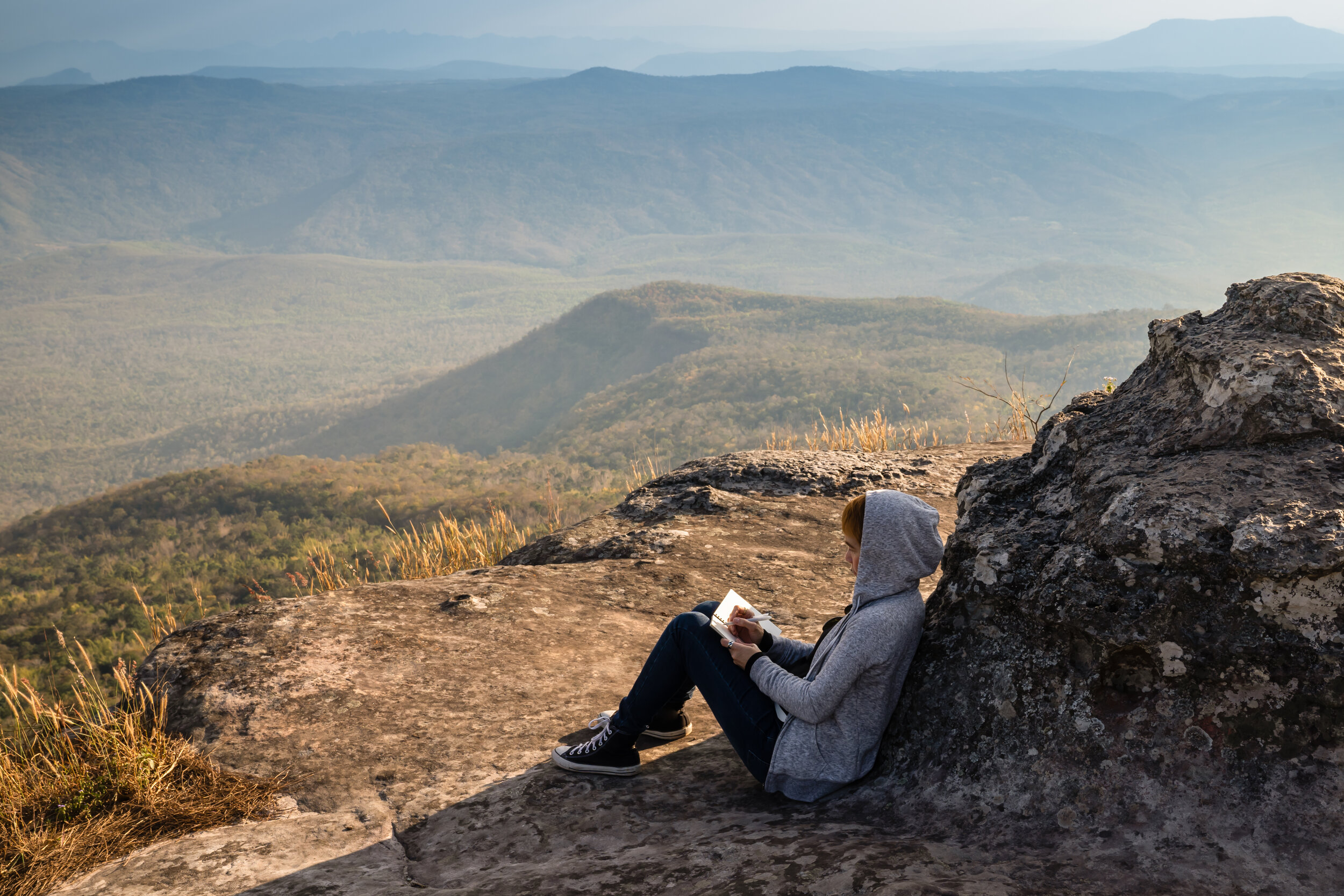Journaling with children of every age
Nature journaling is a wonderful activity to share with the children in your life. Whether you are a parent, grandparent, teacher or friend, nature journaling can begin when children are old enough to hold a paintbrush and can be adapted as they grow.
I will share my thoughts on nature journaling with children of different ages. Each age group has different needs and challenges and we can sensitively adapt our nature journaling practice to benefit each child as they progress.
When nature journaling with children, it is important to remember to cover their basic needs first. Enure that they are safe, warm, protected from sun and insects and have water and food at hand. When these needs are covered, children are much more able to concentrate on journaling. This is important for all age groups but especially when children are very little.
Having a dedicated nature journaling kit can help make nature journaling easy and fun. If you’re a parent, you can have a backpack for each child with nature journal, paints and pens ready to go. If you’re a school or kindergarten teacher, you could have a box with all the nature journals together which you can grab when the class is ready to go on a journaling adventure. Less time searching for materials means more time journaling!
Early Years (Age 0 - 4)
At this age, nature journaling will involve a lot of talking about the things you see and experience. I consider talking about nature to be nature journaling, at this age. We are ‘writing’ the nature experiences into the hearts and minds of our children. Experiences in nature are something that they will remember for the rest of their lives.
You can use specific language when you’re talking with children, even when they are very young. Instead of using the word ‘bird’ you can say the species name. You will be surprised how young children can begin to identify particular animal and plant species, given the chance.
Say your thoughts out loud and let them do the same. Tell them what you see, the questions you have and the things you wonder about. Let them share your amazement too! The natural world is infinitely fascinating and when young children see you looking at the world with curiosity and wonder, they will too.
Let nature journaling be messy!
Introduce a range of different mark-making tools and allow the children to express themselves while they are outdoors. A two-year-old dabbing paint on paper while sitting outdoors with you and talking about birds is nature journaling.
Remember that nature journaling and nature experiences at this age should be PLAY. It is going to be messy and that’s how it should be. Children learn best when they are at play. Let them paint themselves, if that’s what they want to do. They might paint the grass or they might pick up a leaf and paint that too. Your role is to facilitate interaction between nature and the child. Do this in whatever way feels fun for everyone.
Some activity ideas that you can use for children in this age group:
Leaf prints
Rubbings
Hand prints with mud
Mark-making outside with paints/pens/crayons
Stick leaves or flowers in their journal with packing tape
Nature scavenger hunt
Verbal exchange with caregiver
Sensory experiences
Patterns in the dirt with a stick
Counting birds/flowers/fruits/anything!
Write on leaves
Collaborate on a page together
Follow ants with chalk
You can create a nature collection with your child or kindergarten group. Picking up treasures is a wonderful sensory experience. You can talk about the texture and colour of the object to help them practice their nature observation skills. Is it wet? Is it smooth? Is it spiky?
Using magnifying glasses or loupes is another fun way to engage young children. My favourite magnifying tools for children are by a group called The Private Eye. They have simple, plastic loupes that are easy for youngsters to use and magnify the world by 5x! You can find them on The Private Eye’s website.
Primary Years (Age 5 – 12)
Children at this age are expanding their awareness of the world and their experiences. This is a great time to start using words, pictures and numbers to capture their nature observations and to bring in the three prompts ‘I notice…’, ‘I wonder…’ and ‘It reminds me of…’.
Around the middle to upper ages in this range (from around 8 or 9), children often start to get nervous about making art. They begin to judge their own drawings and many people stop drawing altogether at this age. It is important to recognise this and to be sensitive to it.
There are several ways we can tackle this issue of children criticising their own artwork. Firstly, we can remember that the type of feedback we give makes a lasting impression. Instead of praising artistic talent or ‘pretty pictures’ we can give feedback by noticing what they have noticed. We could say, for example, ‘I see that you have used words, pictures and numbers on your page’ or ‘I see that you noticed the hairs on the surface of your leaf. Did you look through a magnifying tool?’ Feedback like this will not reinforce children’s idea that nature journaling is all about art, but instead help them go deeper with their observations in nature.
A second way to ease children through this sensitive time is to give them specific art instruction, such as using simple shapes to build the 3D form of an animal. Step-by-step instructions can show children that these skills can be learned and that they need not give up just because they feel they don’t have ‘talent’. Books such as Drawing With Children by Mona Brookes can help you.
There are lots of nature journaling activities that can be done with children of this age that are fun and engaging. Many of these activities are described in detail in the book How to Teach Nature Journaling by John Muir Laws and Emilie Lygren. Be sure to download or buy a copy of this book if you’d like more details.
Some activity ideas that you can use for children in this age group:
Words, Pictures & Numbers
I Notice, I Wonder, It Reminds Me Of
Sensory awareness
Colour search
Look up high and down low for new observations
Trace a plant shadow onto your journal page
Games and challenges - My Secret Plant; Each To Its Own (from How to Teach Nature Journaling)
Zoom in, Zoom out using magnifying tools
Comparison of two similar things
Lifecycle study
At this age you can bring in some different art tools such as fine-liners, colour pencils and watercolour pencils. Give specific instruction on how to use these new tools to build the children’s confidence and comfort level.
If you are a beginner yourself and are not confident using specific art tools, that’s absolutely fine! YouTube is a great source of information. Search for whatever technique you would like to learn (for example, ‘how to use watercolour pencils’) and you will have a range of videos to help you learn each new skill. Learning alongside the children can be wonderful because it lets them see that art is a skill that improves with time and practice, not a talent you’re born with.
Teenage Years (Age 13 - 18)
At this age, children are starting to deepen their conceptual understanding of the world and their study areas of literacy, numeracy, science and art. Nature journaling is perfect for encouraging them to go further in all of these areas in a way that is interesting and engaging.
To encourage mathematical thinking you can focus on counting, measuring and finding data in the landscape. This can be done by mapping data using stem and leaf plots, histograms, and bar charts. To develop confidence with the written word, you can focus on poetry and prose in response to nature. To develop artistic skills in specific areas, you can use the tutorials in John Muir Law’s book ‘The Laws Guide to Nature Drawing and Journaling’.
Some activities for children in this age group might include:
From How To Teach Nature Journaling by John Muir Laws and Emilie Lygren
Species identification using field guides
Mapping the landscape
Cross sections
Poetry and reflective writing
Event comic strips
Biometrics
Finding numbers
BioBlitz/Biodiversity days
Tracking change over time
Generating and testing hypotheses
Sit-spot reflection
Mentoring opportunities
Adolescence can be a confusing time for many children. Things are changing quickly, and children can feel confused about school life, social life and families. Just as important as science and maths at this age is finding solace and safety in nature. Nature can have a calming effect and provide a place to reflect. I recommend building some time into the schedule for personal reflective writing while in nature.
Time spent in nature in childhood builds lasting memories and helps creates adults that are passionate about nature and nature conservation. Let nature journaling be a part of your child’s learning and development and adapt it to their needs and interests as they grow.
If you’d like to keep the conversation going, or share your experience of nature journaling with children, be sure to comment below.
